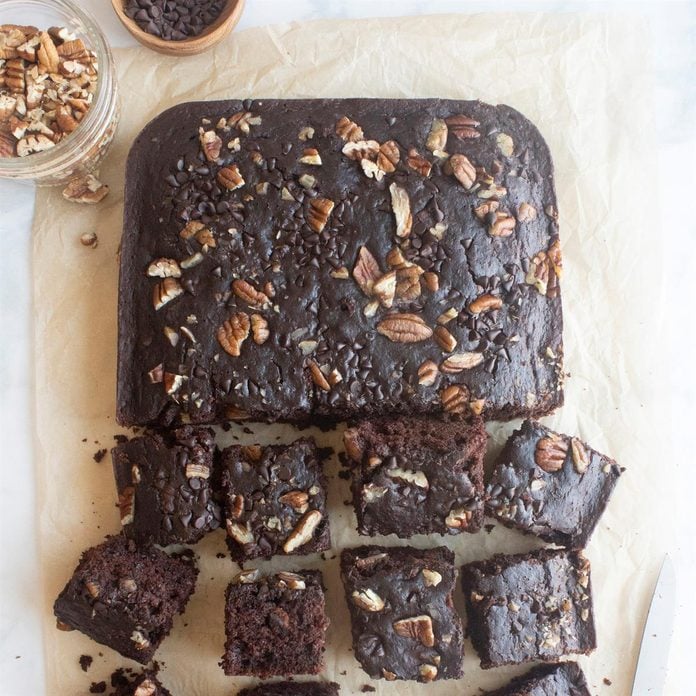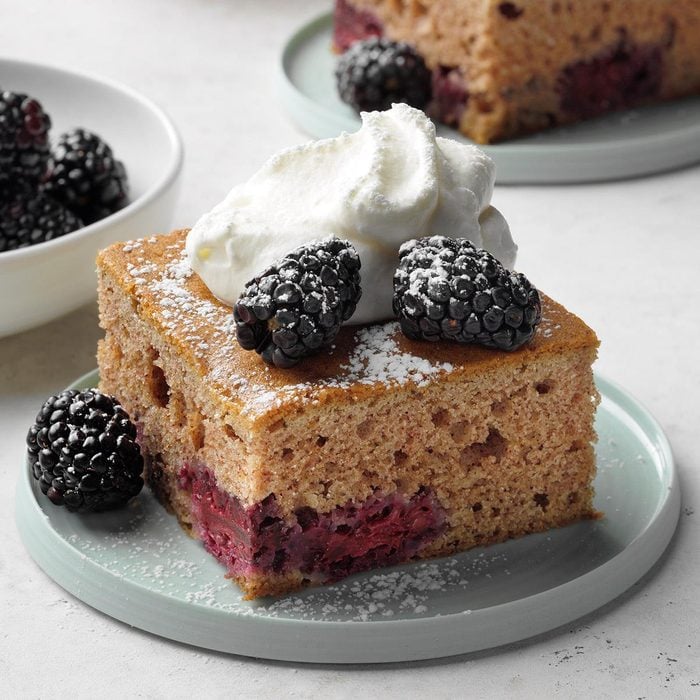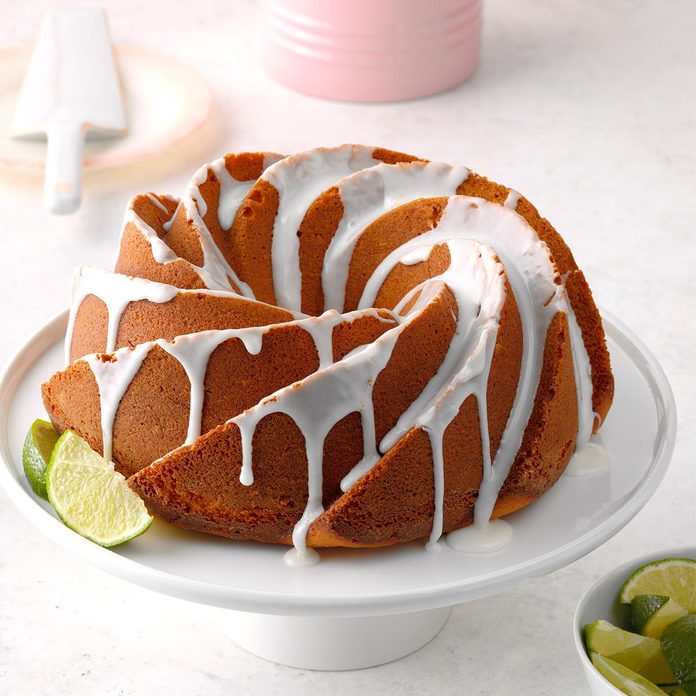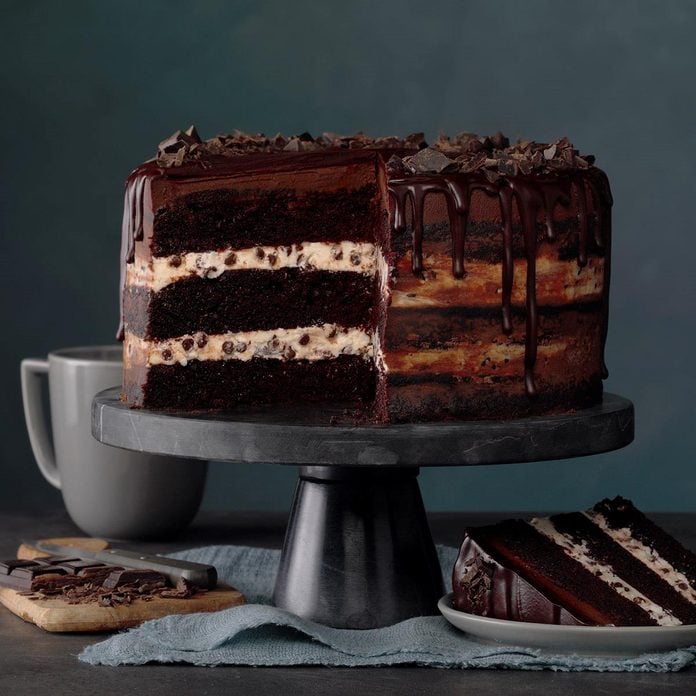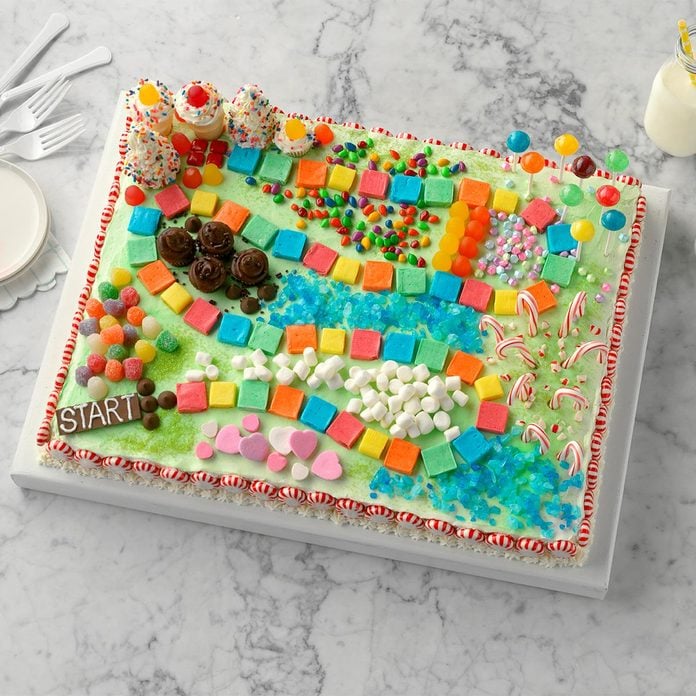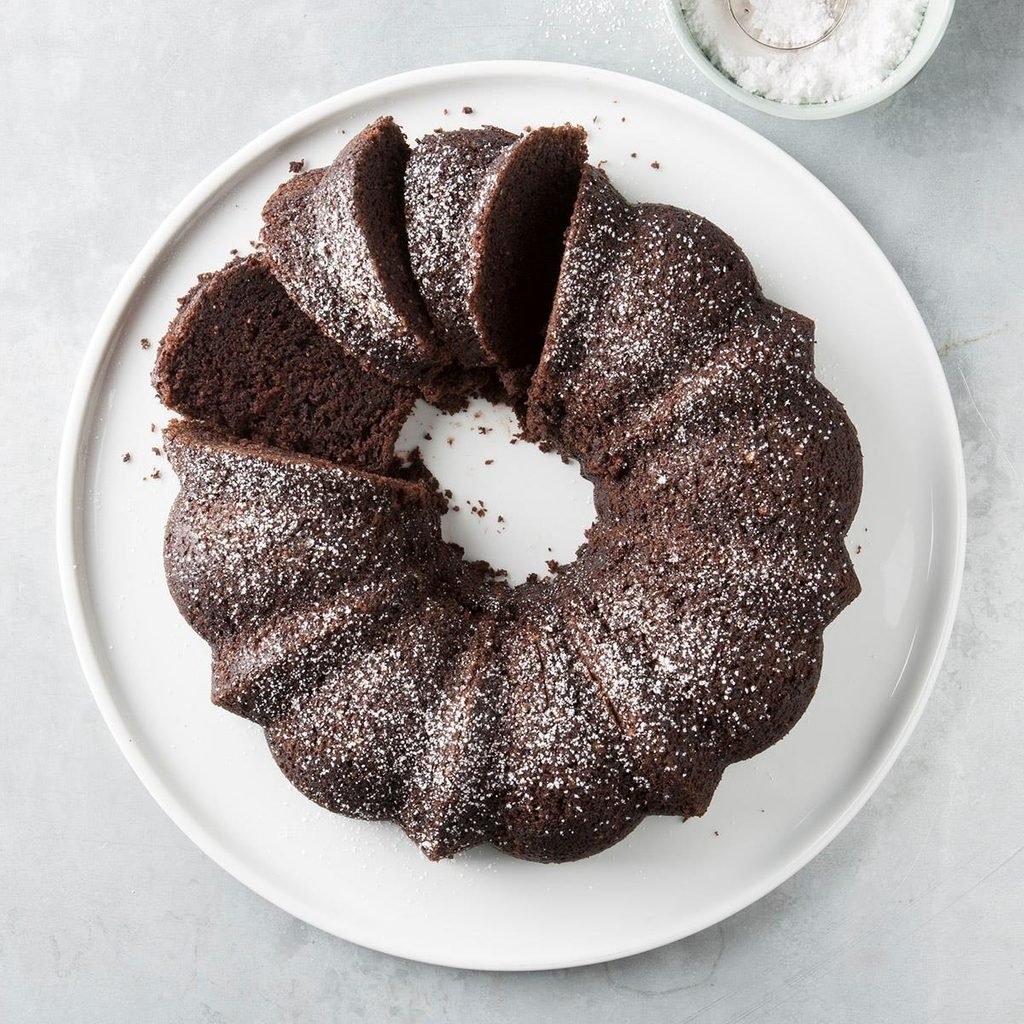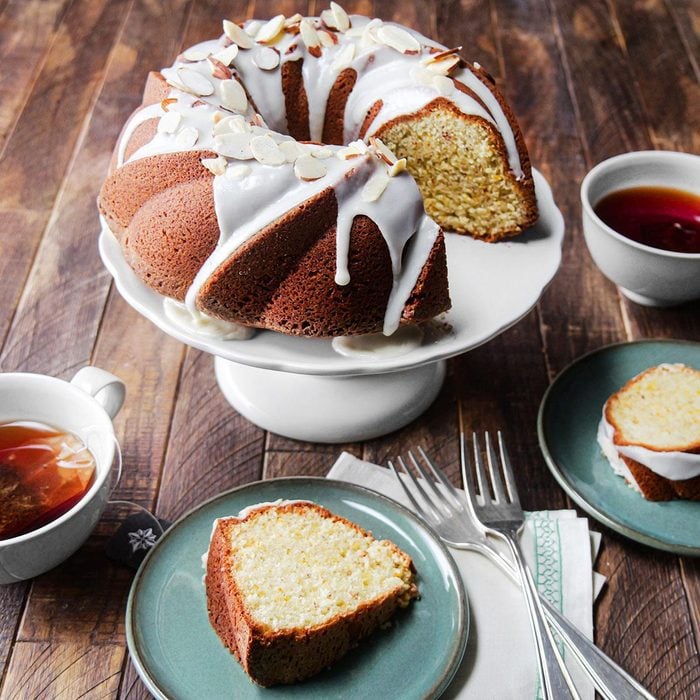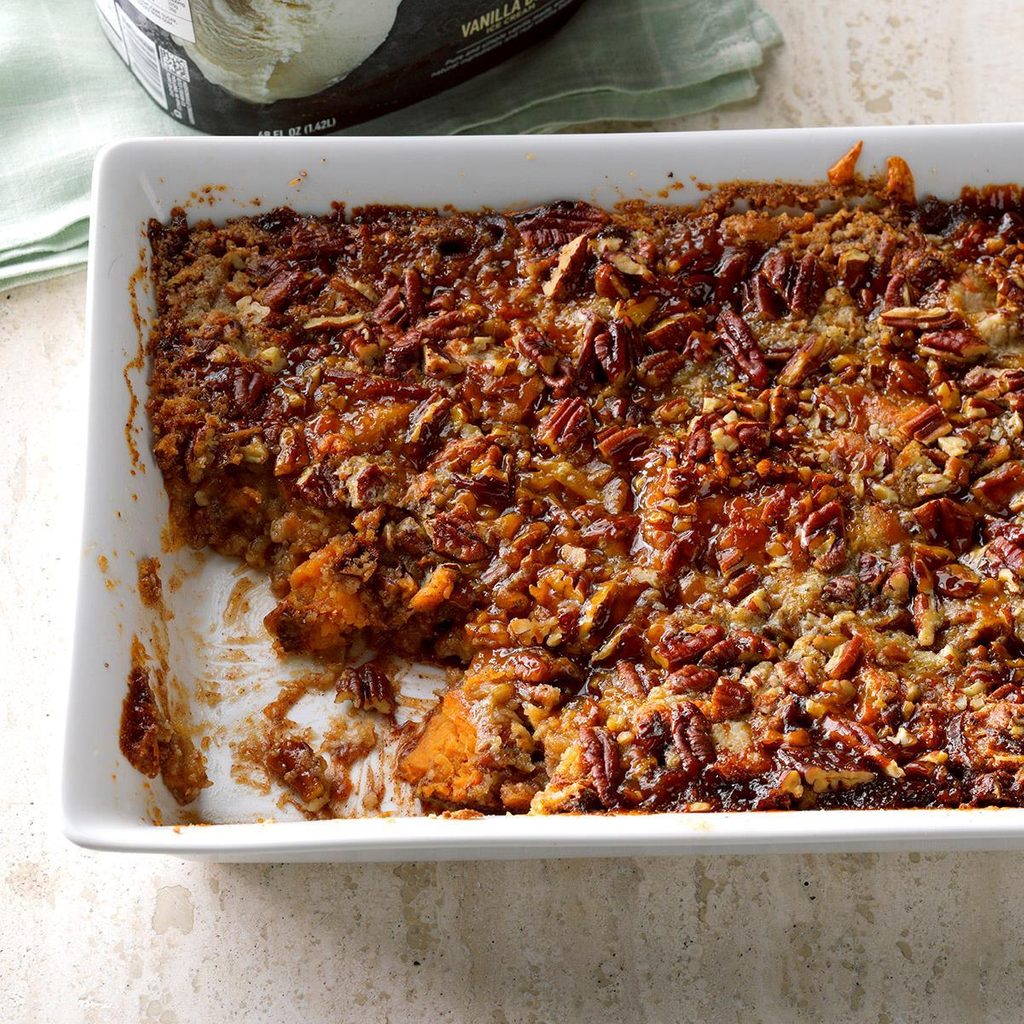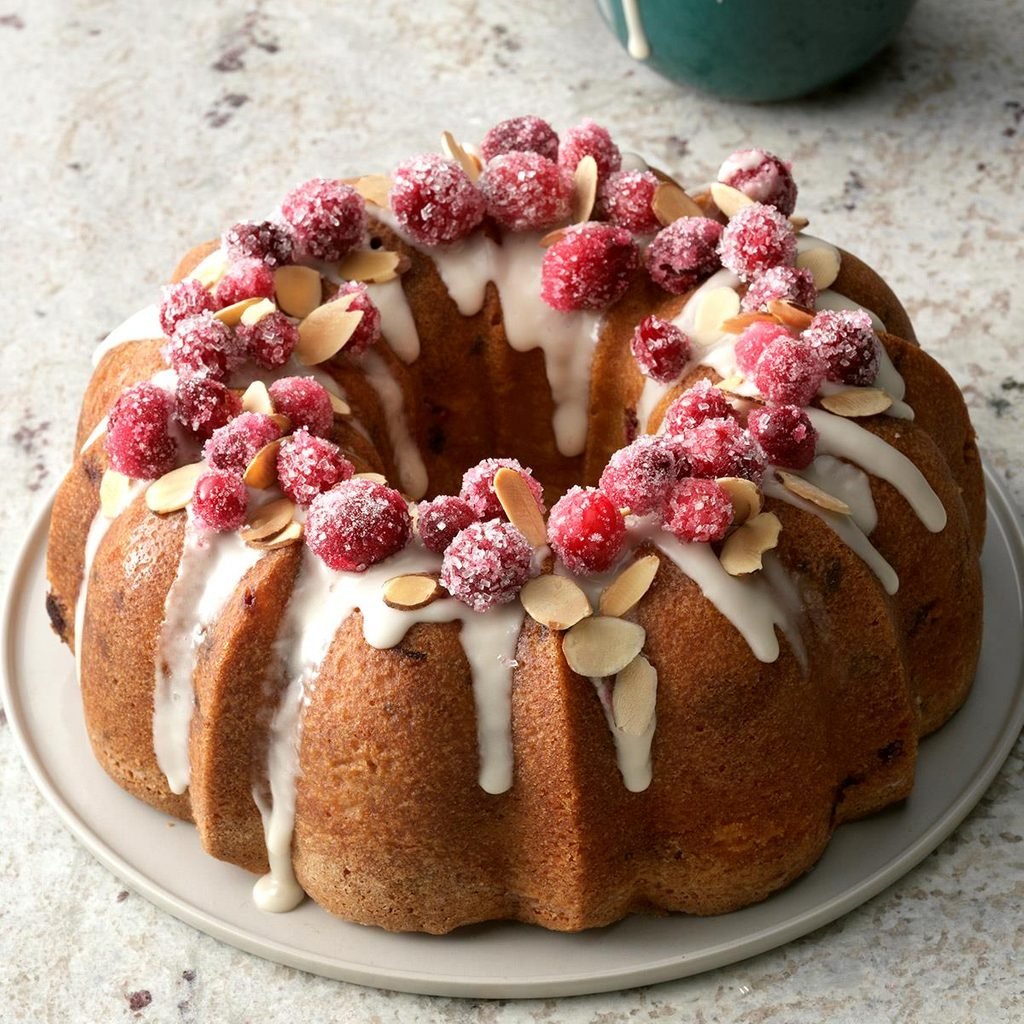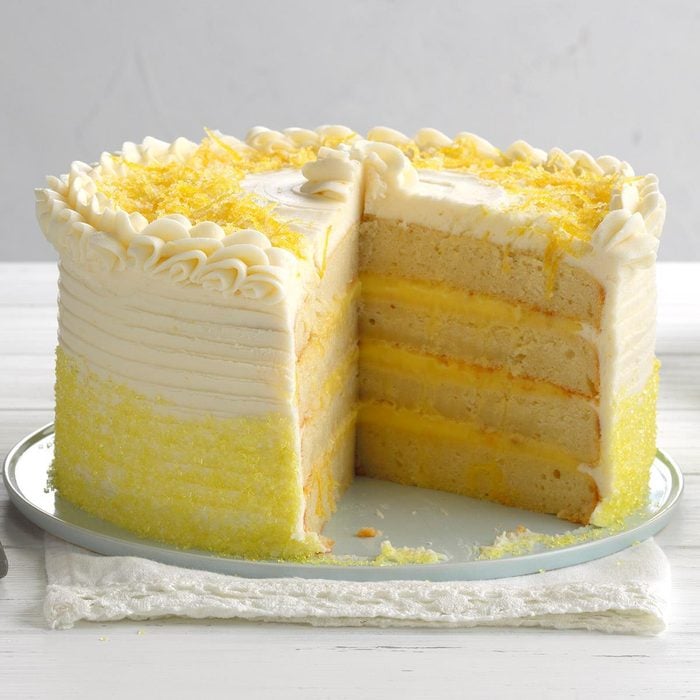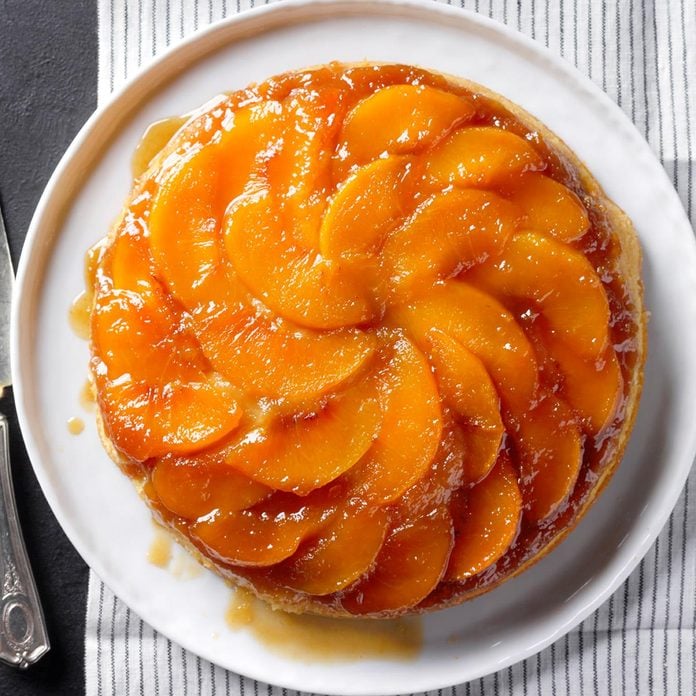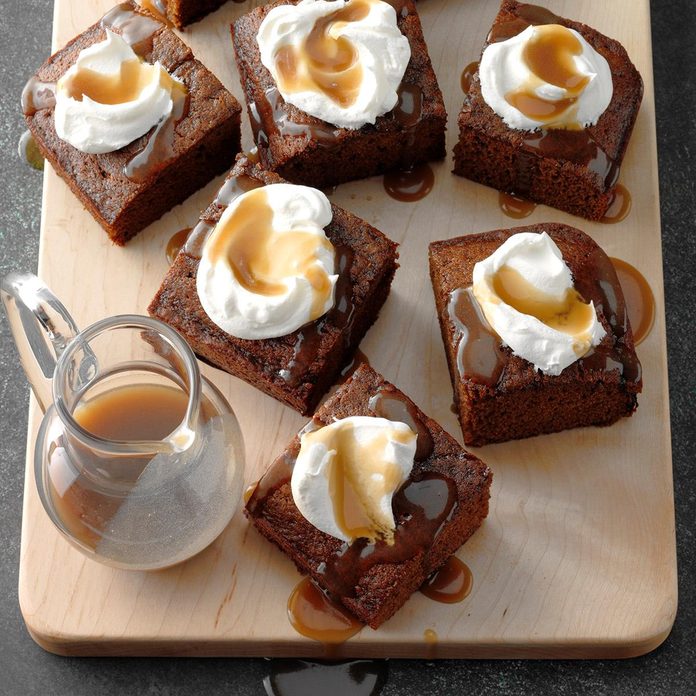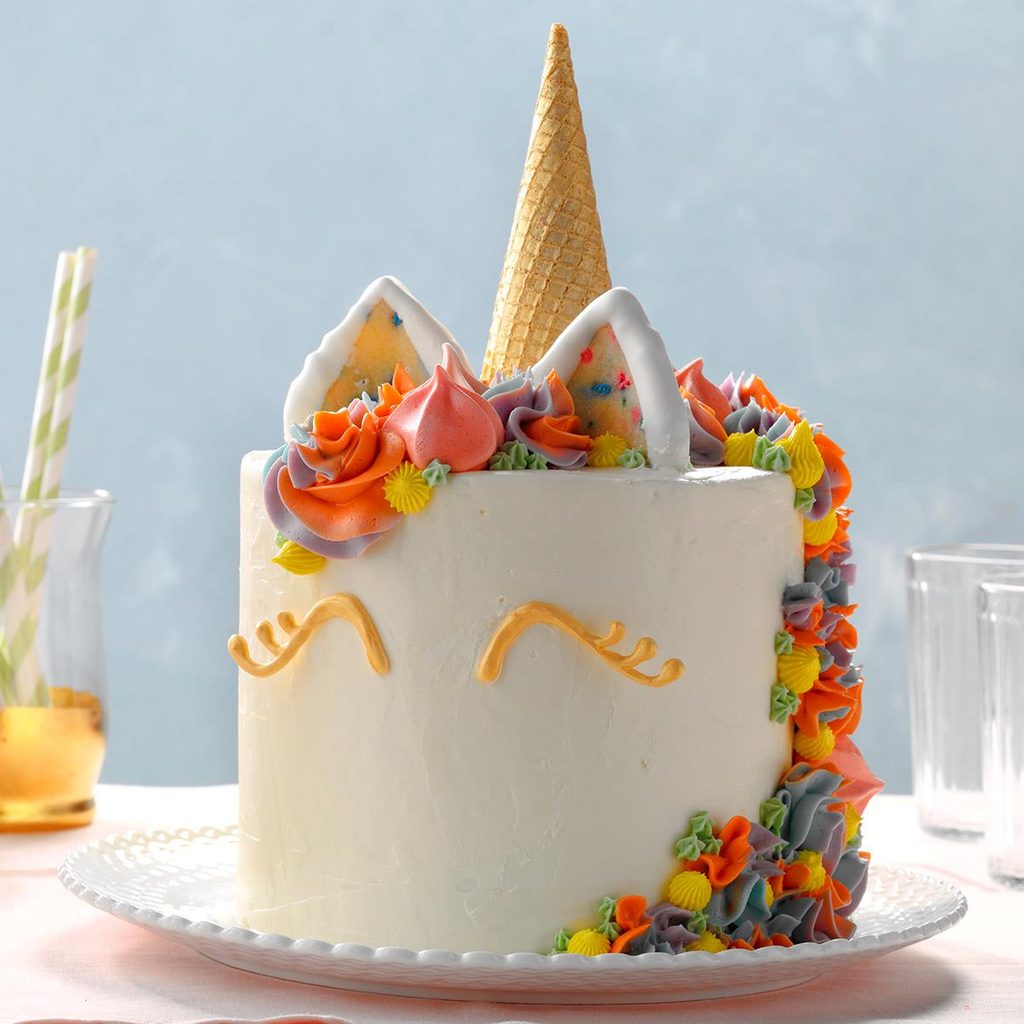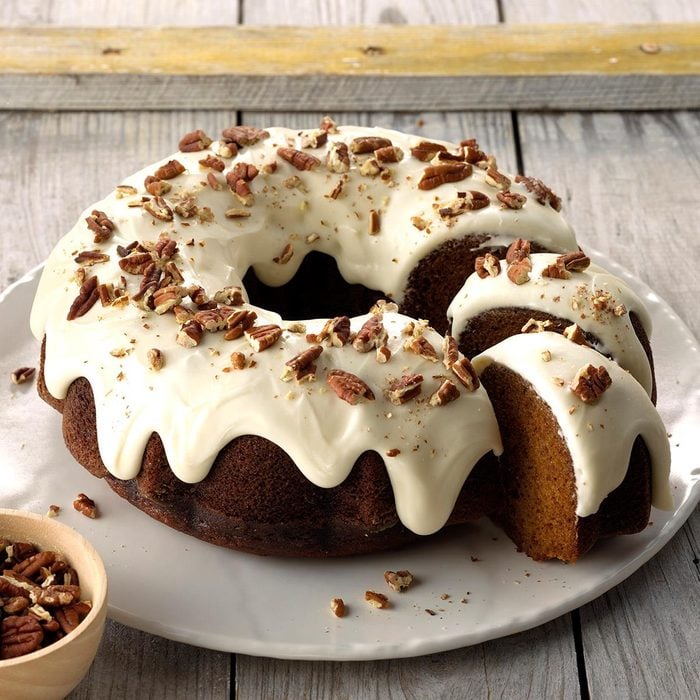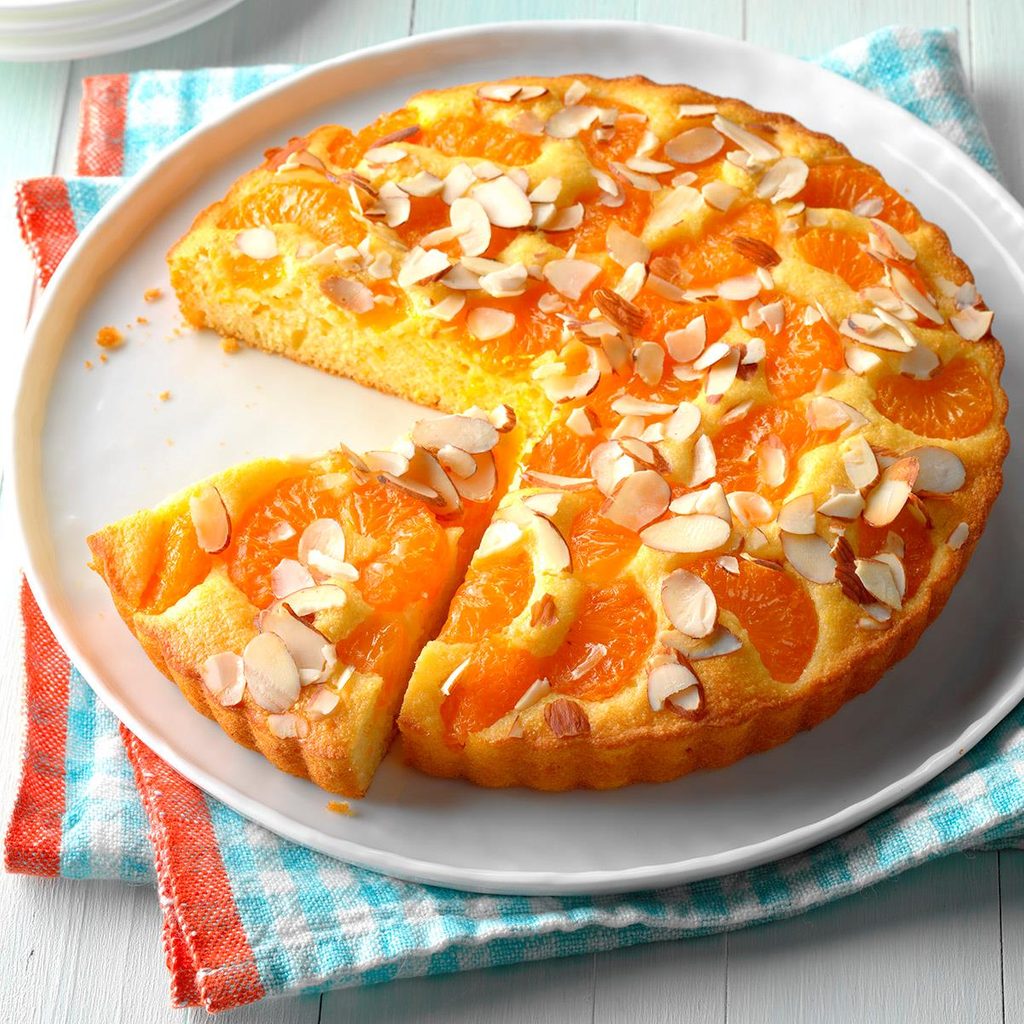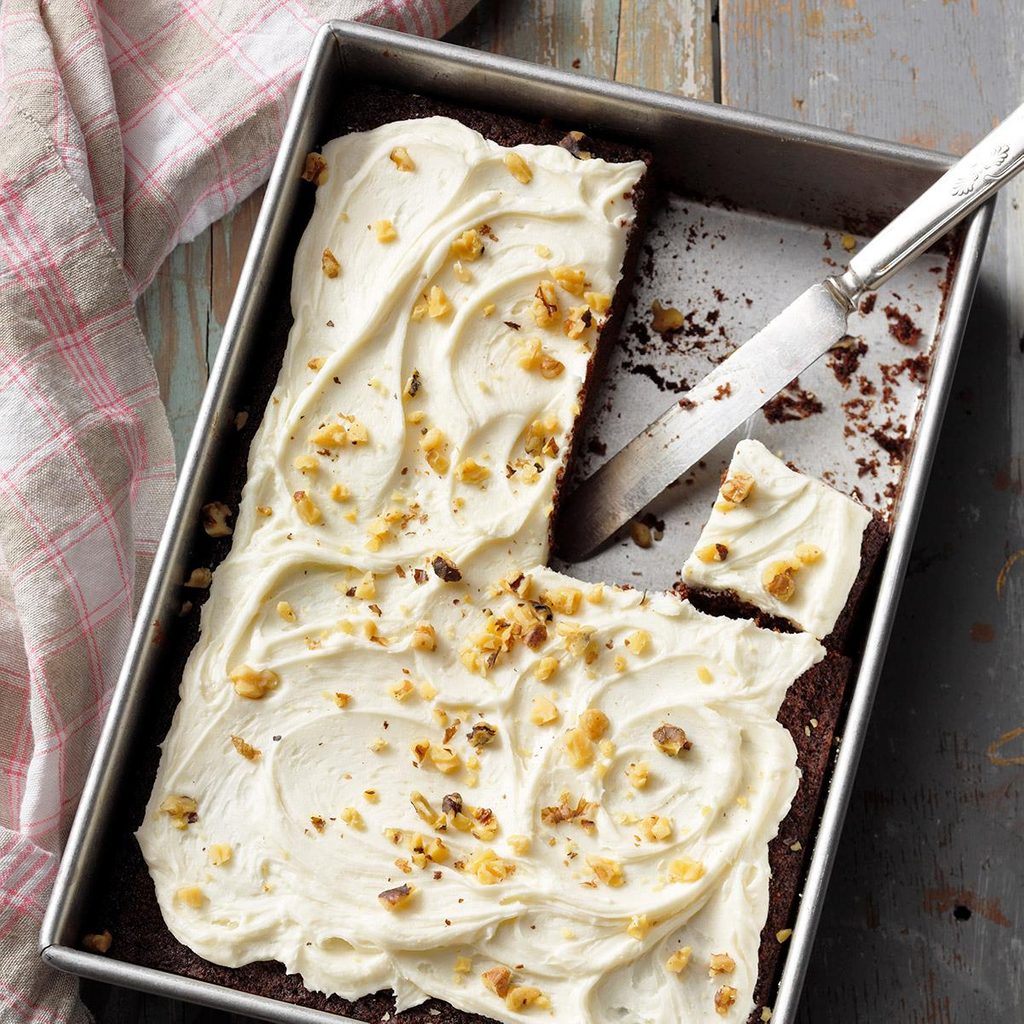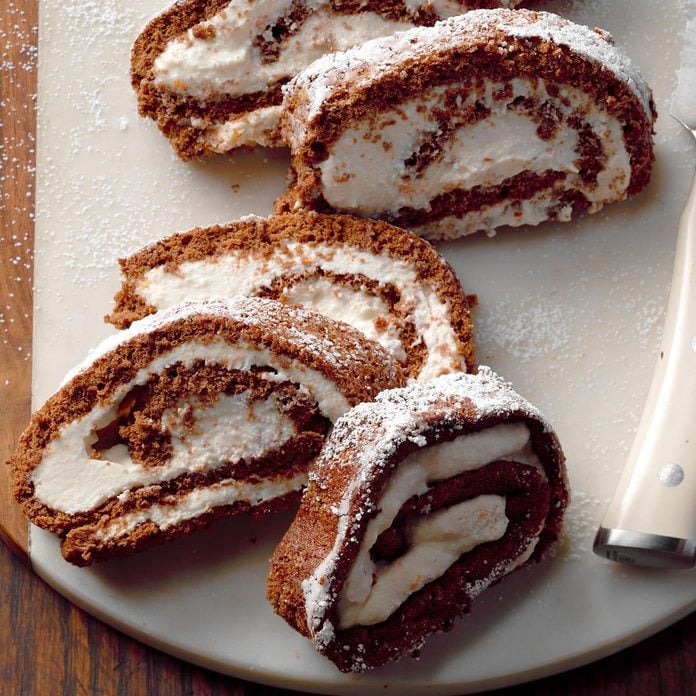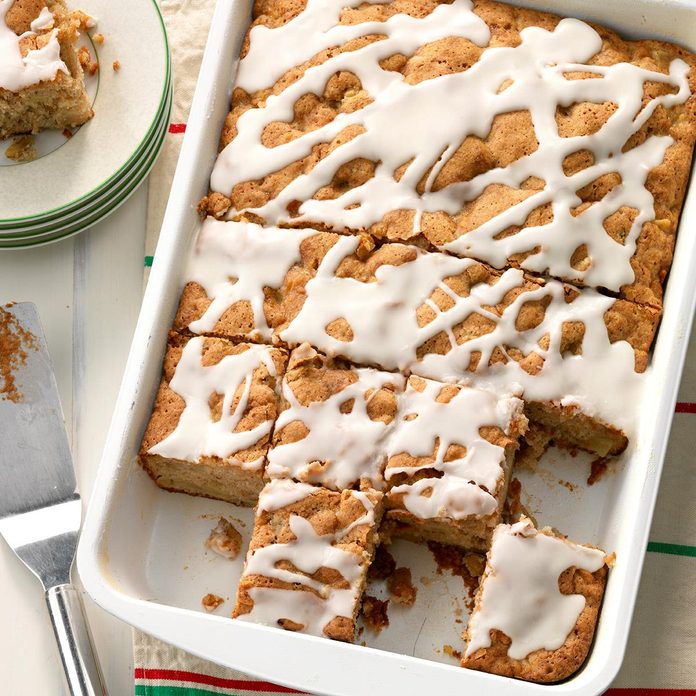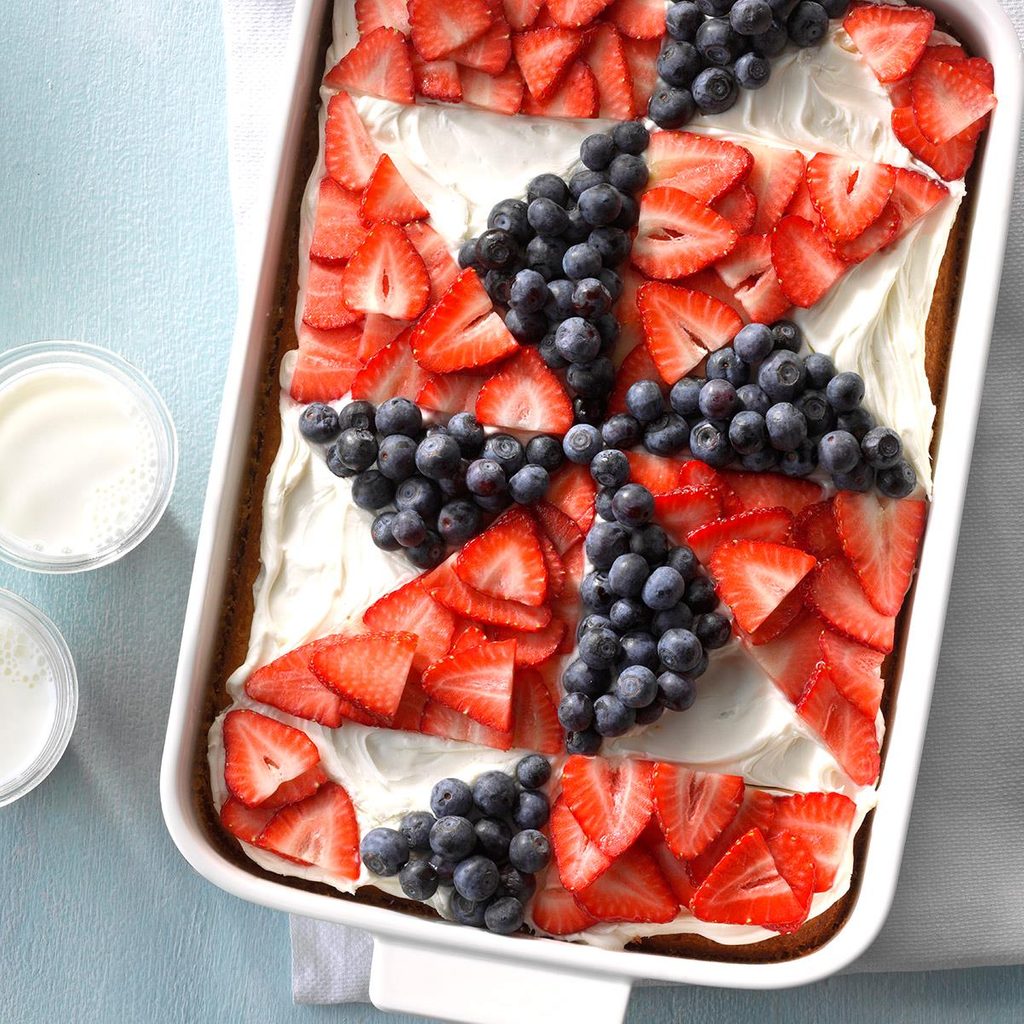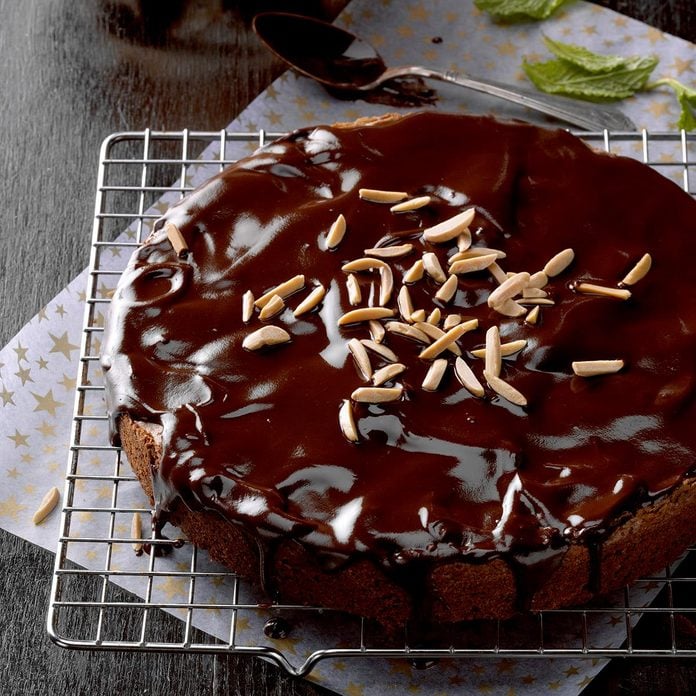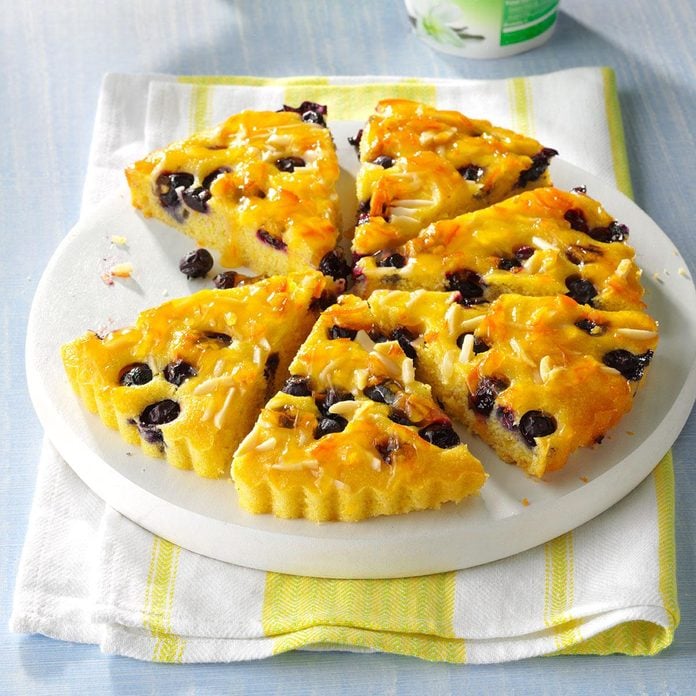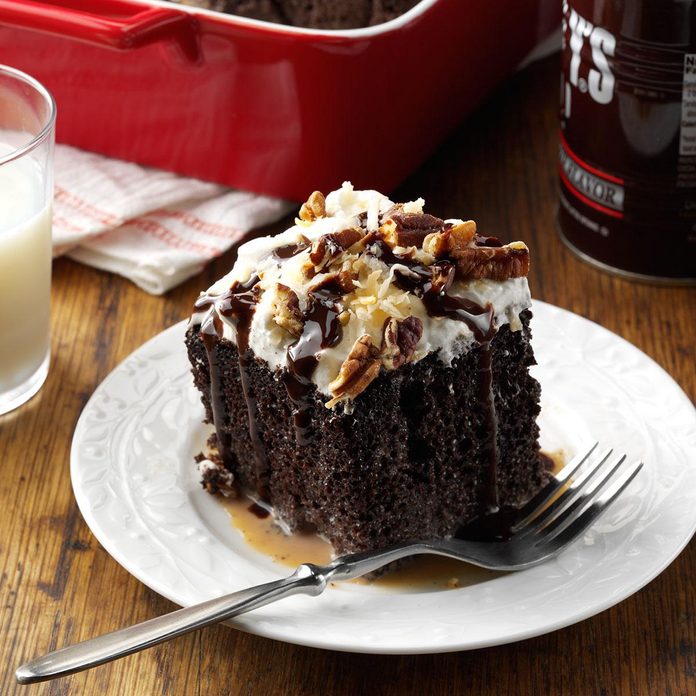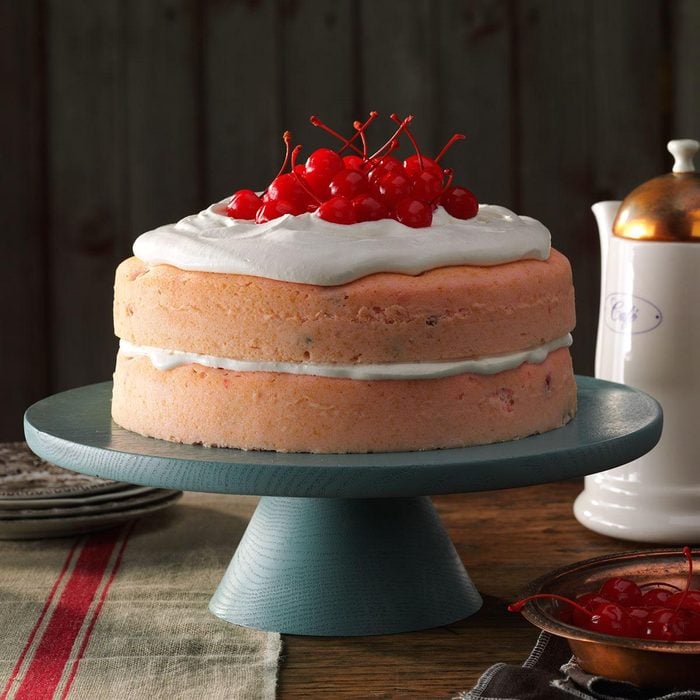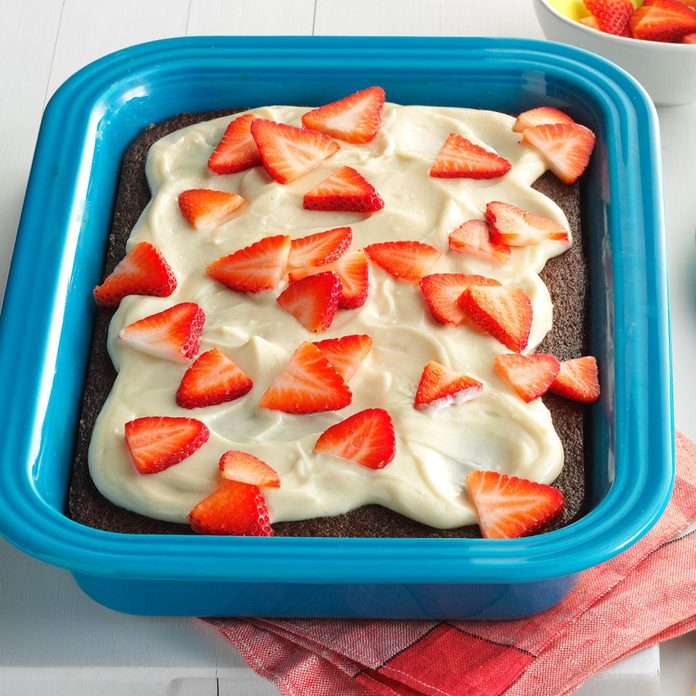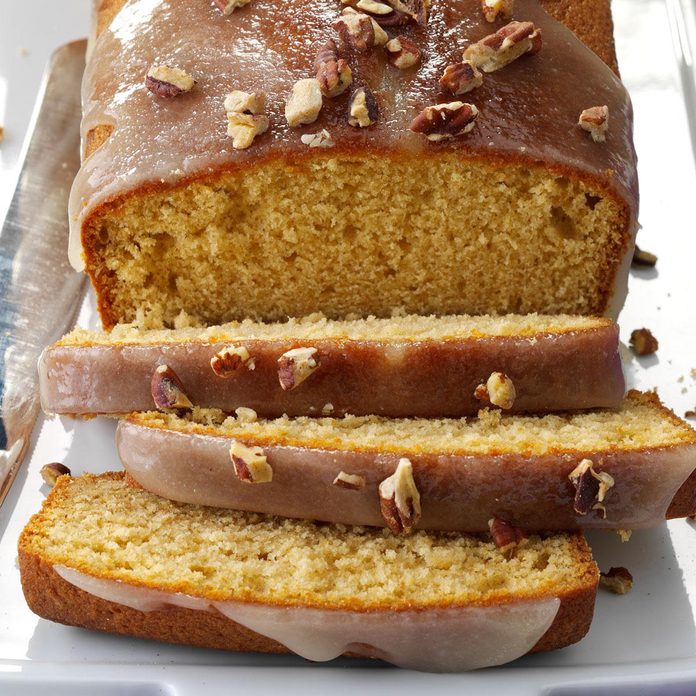ⓘ
As Julia Child once said, “A party without a cake is just a meeting.” And how true! Learning how to bake a cake, even a simple one, is your gateway to making any gathering—whether it’s a birthday, graduation party or just a weeknight dinner—into a celebration.
You can make cakes at home easily. Just check out our essential techniques, cake recipes and must-have gear to get started. Soon, all your get-togethers will turn into occasions to celebrate.
How to Bake a Cake
 Taste of Home
Taste of Home
At Taste of Home, we have hundreds of cake recipes in our library. These cakes require various techniques. However, the steps below outline how most classic cakes are made. Use this as a guide when you’re getting ready to make a birthday cake or other special occasion dessert.
Step 1: Prep the cake pans
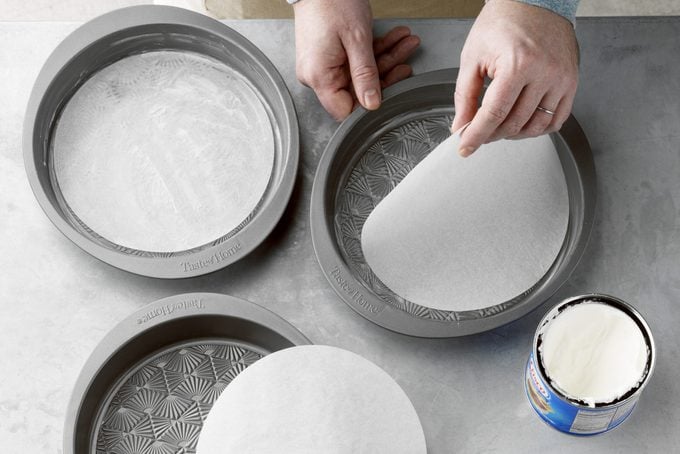 TMB Studio
TMB Studio
Start your cake by preparing your baking pans. For layered cakes, that means greasing and lining round cake pans.
To do this, use baking spray, butter or shortening to coat the inside of the pan. Then add a round parchment paper to the bottom of the pan and give that a quick coat of cooking spray.
This process ensures that the cake doesn’t stick to the pans once it’s baked. And, yes, our Test Kitchen recommends this step even with nonstick pans.
Step 2: Cream ingredients
 TMB Studio
TMB Studio
To start the cake batter, pull out your stand mixer (a hand mixer works, too). Add the sugar and room-temp butter to the bowl and cream until light and fluffy—about 5 minutes.
Then add in the eggs one at a time, beating until well combined. If your recipe calls for extracts, this is the time to add them.
Taking your time at this stage allows your batter to achieve the right airy consistency later.
Test Kitchen Tip: Be sure to use room-temperature eggs and softened butter. Room-temp ingredients blend together much easier.
Step 3: Combine dry ingredients
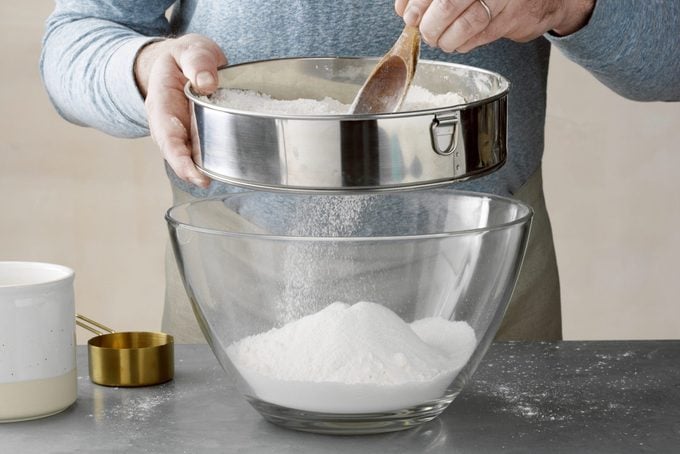 TMB Studio
TMB Studio
Next, combine your dry ingredients. These will typically include flour or cake flour, baking soda, baking powder, salt and sometimes extras like cocoa powder or baking spices.
Step 4: Alternate wet and dry ingredients
 TMB Studio
TMB Studio
It’s time to start adding the dry ingredients to your creamed mix. Alternate adding the dry mix with any remaining wet ingredients until you have a smooth batter.
Wet ingredients can include milk, buttermilk, sour cream, yogurt or water.
Step 5: Portion out
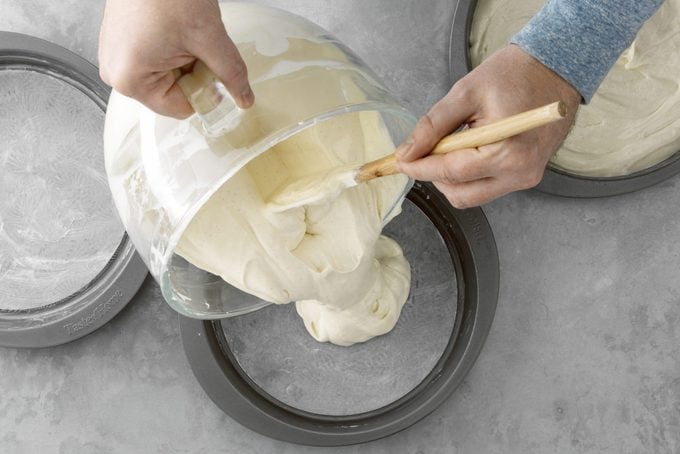 TMB Studio
TMB Studio
With your batter finished, it’s time to add it to the pans you prepared. For layer cakes, you can divide the batter by eye or use a kitchen scale to make sure the batter is split between the pans perfectly.
Whatever method you use, know that it is important for the amount of batter in each pan to be as equal as possible. This makes baking the cakes evenly much easier.
Step 6: Bake and cool
 TMB Studio
TMB Studio
After dividing your cake into individual pans, pop the pans into the oven and bake for the minimum recommended time according to the recipe.
When the time is up, check if the cake is done. You can do this by tapping the top of the cake. If the cake doesn’t spring back to your touch, it needs more time. If it springs back when tapped, it’s baked. You can also test the cake with a toothpick. The cake is fully baked when the pick comes away with a few moist crumbs or no crumbs at all.
Once baked, remove the pans from the oven and allow them to cool on a wire rack for 10 to 15 minutes. Then invert the pans and lift them away from the cakes. Peel away the parchment and allow the cakes to cool completely before frosting.
Step 7: Frost
 TMB Studio
TMB Studio
When the layers are finally cool, you can frost the cake. There are plenty of types of frosting out there to choose from, but our Test Kitchen suggests you try a classic American buttercream for your first batch. This frosting is simple to make and exceptionally delicious.
To frost, first add a generous scoop of frosting on top of the first layer of cake and smooth with an offset spatula. Repeat until you’ve stacked all the layers.
Then give the whole cake a very thin coat of icing. This is called a crumb coat and it helps to contain crumbs. Chill the cake in the fridge or freezer for about 10 minutes, then finish frosting by adding swoops of buttercream with a spatula.
How to Decorate a Cake
 TMB Studio
TMB Studio
One of the great joys of decorating a cake is that you can do as much or as little as you like.
For sheet cakes and single-layer cakes, all you have to do is swirl your favorite frosting on top with an offset spatula. Then you can scatter sprinkles, chocolate curls or even crushed cookies over the top.
Layer cakes require a bit more effort. Be sure to make plenty of buttercream to sandwich between each layer of cake. Stack the layers and cover in icing. You can then use a piping bag fitted with different pastry tips to create intricate designs. If that’s not your style, try a ganache drip, edible flowers or just a very festive cake topper.
Types of Cake
There are lots of kinds of cake out there—and we’re not just talking about flavor! Cakes vary widely in the techniques used to make them, ingredients, proportions and presentation. Here are some of our favorite types of cake.
Layer Cake
 TMB Studio
TMB Studio
These are the cakes we know and love. A tall, layered cake is what makes birthday parties so special. Layer cakes are simply cakes that are stacked high and sandwiched with frosting or other fillings.
Layer cakes can be frosted and decorated on the outside or even kept naked (minimal frosting on the outside reveals the layers inside). These cakes are the ultimate celebration desserts and can be made in any flavor combination.
Sheet Cake
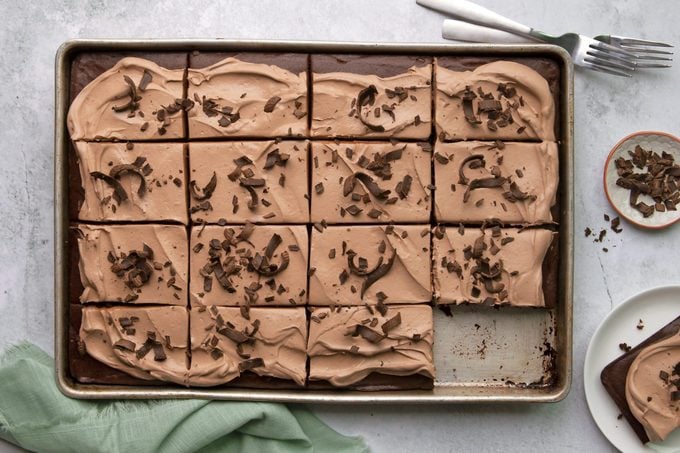 TMB Studio
TMB Studio
Not every celebration calls for a towering layer cake. That’s where sheet cakes come in.
Sheet cakes are baked in a sheet pan or 13×9 pan and topped with a single layer of frosting. They are equally delicious as their stacked counterparts but take less time and are easier to decorate. Like layer cakes, sheet cakes come in all sizes and flavors.
Pound Cake
 TMB Studio
TMB Studio
Pound cakes get their name from the traditional weight of ingredients used to make them: equal parts butter, flour, sugar and eggs.
Pound cakes tend to be dense and moist. You’ll often see pound cakes baked up in loaf pans or decorative fluted tube pans. Since these cakes tend to be light on decoration, they make for great everyday bakes. Make one for dessert and have it the next day for breakfast.
Bundt Cake
 TMB Studio
TMB Studio
Bundt cakes are named for the type of pan used to bake them. Bundt pans, also called fluted cake pans, are decorative molds that typically have a hole in the center.
To make these molded cakes, you can use a variety of cake recipes. Our Test Kitchen recommends opting for recipes specifically formulated for these decorative cake pans or cake recipes with heavier batters like pound cake. Avoid recipes for angel food cakes, chiffon cakes or boxed cake mixes.
Perhaps the best part about baking Bundts (other than that they are absolutely delectable) is that they don’t require a lot of fuss to finish. Once you remove a Bundt cake from its pan, decorate it with a simple glaze or a bit of confectioners’ sugar. Learn how to make chocolate glaze for doughnuts in your kitchen.
Angel Food Cake and Chiffon Cake
 TMB Studio
TMB Studio
If you’re searching for a light and airy cake, look for angel food cake and chiffon cake recipes. These cakes get their light texture and volume from whipped egg whites. These cakes are also baked in a tube pan, giving them a distinctive shape.
Because these cakes are so delicate, they’re often served up simply without much frosting. Fresh fruit and homemade whipped cream heaped on the side is optional but highly encouraged.
Cake Roll
 TMB Studio
TMB Studio
Cake rolls are a great way to serve cake a little differently. Cake rolls are made up of a light sponge cake and rolled up with the filling of your choice—jelly, frosting or even ice cream. You can leave cake rolls plain, dust them with a bit of confectioners’ sugar or frost them—it’s all up to you.
Mastering the swirl can seem tricky, but if you follow our guide for how to make a cake roll, you should have no trouble.
Coffee Cake
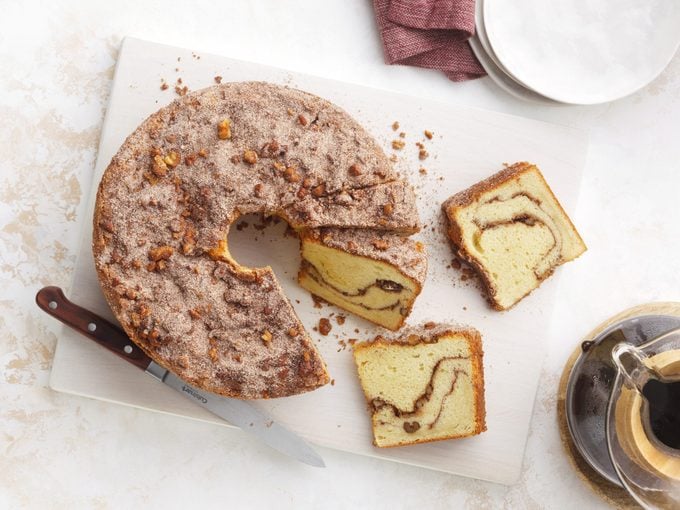 TMB Studio
TMB Studio
Coffee cakes are, simply, cakes intended to be eaten alongside coffee or tea. They’re commonly made in tube pans or fluted cake pans (though you’ll see them made in 13×9 pans and even round cake pans at times).
These cakes are served unadorned—no frosting needed! Also, they tend to be a bit less sweet since they’re meant more as a snack or breakfast than a dessert.
Cake Baking Tips
 TMB Studio
TMB Studio
Whether you’re a master baker or just have a favorite boxed cake mix (hey, we do!), there are always some tips to brush up on before baking so you get the best possible results.
How do you make cake moist?
Cakes get moisture from all sorts of ingredients. Some cakes, like our Test Kitchen’s favorite vanilla cake, rely upon sour cream for moisture. Other recipes may call for buttermilk, yogurt or even applesauce. All these ingredients add moisture to your cake, so be sure not to scrimp on them. If a cake calls for a full cup of sour cream, be sure to add it.
Also, don’t overbake your cake! All the moisture-adding ingredients in the world won’t do you any good if you leave the cake in the oven for too long.
How do you fix dry cake?
Sometimes, despite your best efforts, your cake ends up dry. You might end up with a dry cake if you accidentally add too much flour or overbake it.
You can fix a dry cake by adding a simple syrup wash or milk soak the way Christina Tosi does. Consider transforming a dry cake into a trifle, too. Adding creams, fruits and more can add moisture and flavor to a dry cake.
How can you tell when cake is done?
The toothpick test is the easiest way to test a cake. Insert the pick into the center of the cake. If it comes away sticky or covered in batter, the cake needs more time in the oven. If the toothpick comes out of the cake with a few moist crumbs, it’s baked through.
If you can’t find a toothpick, get creative! Try a bamboo skewer or a sharp paring knife. If you don’t have anything to pierce your cake with, try pressing the top of the cake. If it springs back, it’s ready to come out of the oven.
What oven rack should you bake cakes on?
Just like when baking cookies, you should use the middle rack to bake your cakes. You don’t want the cake too close to the heating elements on the bottom or top of the oven. Using the middle rack ensures your cake will be cooked evenly.
How do you cut a cake?
To cut a cake, dip your knife in hot water, then wipe it dry. The warm blade will cut cleanly through all the layers to reveal a gorgeous slice. Be sure to wipe it clean between slices.
How do you store cake?
After you’ve enjoyed your cake, you might find yourself with some leftovers. Cakes are best eaten within a week and stored in a cake keeper or cake dome. If the frosting is heat-sensitive (think Swiss meringue buttercream, cream cheese or whipped cream), keep that cake in the fridge.
You can freeze cakes as well—frosted or unfrosted. Just be sure to wrap them tightly in plastic wrap or seal them in an airtight bag or container.
Learn How to Bake These Top Rated Cakes
Doughnut Hole Cake
This is the easiest, most impressive cake I’ve ever made! You can use chocolate, lemon or strawberry cake mix in the place of red velvet. —Robert Pickart, Chicago, Illinois
Get Recipe
Learn how to make
gluten-free red velvet cake.
Devil's Food Snack CakeMy husband and his friends request this devil's food snack cake for camping trips because it’s easy to transport. That makes it great for taking to potlucks and other events, too, as there's no frosting involved. —Julie Danler, Bel Aire, Kansas
Confetti Birthday Drip CakeThis is a moist and fluffy vanilla drip cake with lots of sprinkles and a whipped vanilla buttercream. It's almost impossible not to feel happy when you see the fun pop of rainbow confetti! —Courtney Rich, Highland, Utah
Grandma's Blackberry CakeA lightly seasoned spice cake lets the wonderful flavor of blackberries shine through in this delectable blackberry cake recipe. —Diana Martin, Moundsville, West Virginia
Margarita CakeThis margarita cake is perfect for a picnic on a warm day. You'll be surprised at how closely it tastes like the real thing. These other
margarita dessert recipes are delicious, too. ?—Dawn Lowenstein, Huntingdon Valley, Pennsylvania
Three-Layer Chocolate Ganache CakeThis decadent triple-layer beauty is pure chocolate indulgence. The cake layers can be frozen prior to final assembly; in fact, they're easier to work with when frozen. —Kathleen Smith, Overland, Missouri
Banana Upside-Down CakeFor a fun and distinctive way to use bananas, try this banana upside down cake. Every time I serve this treat, someone requests the recipe. —Ruth Andrewson, Leavenworth, Washington
Spiced Chocolate Molten CakesThis splurge dessert is the kind you just have to linger over. Plunge your fork into one of the cakes and the chocolate and conversation start flowing. —Deb Carpenter, Hastings, Michigan
Lemon Poppy Seed CakeThis luscious lemon poppy seed cake recipe uses cake mix and pudding mix for an easy dessert highlighting the classic flavor combination. —Betty Bjarnason, Egbert, ON
Candy Land CakeMy friend asked me to make her son's 5th birthday cake, and when I asked her what he wanted on it, she said, "Oh, just put on gobs and gobs of candy." Instead of piling on candy haphazardly, I thought it should look like the Candy Land board game. The birthday boy, his friends and family members loved it! —Pen Perez, Berkeley, California
Black Forest Upside-Down CakeThe divine flavors of this simple Black Forest cake will impress your guests and leave you with many requests for the recipe! —Kimberly Campbell, Wheeling, West Virginia
Double Butterscotch Coconut CakeI got this recipe from a co-worker years ago, and then I changed it a bit by adding a family favorite: butterscotch. It is super easy to throw together and is a perfect accompaniment to coffee or tea. —Marina Castle Kelley, Canyon Country, California
Best Gluten-Free Chocolate CakeThis gluten-free chocolate cake is a yummy treat that everyone can enjoy. Sometimes I stir in gluten-free chocolate chips or chopped nuts for variety. —Nichele McCague, Poway, California
Pumpkin Pie CakeNo one will guess this showstopper dessert with luscious cinnamon frosting starts with a mix! It's a year-round favorite. —Linda Murray, Allenstown, New Hampshire
Tuscan Sun Orange Cranberry CakeThis recipe came to be through much trial and error. Growing up, my family used farina flour in desserts, and I thought it would lend a nice texture to this cake. It's an old-world Italian-style cake, delicious but not too sweet. The orange-cranberry combination is perfect! —Ninette Holbrook, Orlando, Florida
Olive Oil CakeA good olive oil cake isn't overly sweet, so it can just as easily be a breakfast treat or an afternoon snack as a dessert. —Lisa Kaminski, Wauwatosa, Wisconsin
Strawberry Rhubarb Cake with OrangeI came up with this strawberry rhubarb cake when I wanted to make something with rhubarb and strawberries that wasn't a pie. If you know someone who hasn't tried rhubarb before, this is a great way to introduce them to it. —Theresa Kreyche, Tustin, California
Festive Cranberry CakeEach fall here in Alaska, an abundant crop of wild cranberries is ripe for cooking. This cake, a favorite in my family, makes good use of the harvest. What's more, since you can prepare it the night before your Thanksgiving celebration, the recipe is a real timesaver at a hectic time of year. —Gladys Wilson, Anchorage, Alaska
Southern Lane CakeI just love this southern-style dessert, and so do dinner guests. With pecans, cherries and raisins in the filling and topping, this version reminds me of a fruitcake—only so much better! —Mabel Parvi, Ridgefield, Washington
Apple-Sweet Potato Pecan Dump CakeThis quick cake has lots of delicious apples, sweet potatoes, spices, pecans and caramel. My surprise ingredient of white cheddar cheese enhances the wonderful filling. —Kathy Specht, Clinton, Montana
Cranberry-Almond Pound CakeWhen you want an extra-special dessert for the holidays, it’s hard to beat a seasonal homemade cake. I like to drizzle mine with a simple but elegant glaze flavored with amaretto. —Jackie Howell, Tucson, Arizona
Confetti Birthday Cake with Chocolate ButtercreamThis is a moist confetti cake with lots of sprinkles and a whipped chocolate buttercream. It's perfect for birthday celebrations! —Courtney Rich, Highland, Utah
Lemon Ricotta CakeThis lemon ricotta cake recipe is a family gem that was passed down from my grandmother and mother. Garnished with shaved lemon zest, the moist four-layer cake is the perfect dessert when you want to impress. —Nanette Slaughter, Sammamish, Washington
Southern Peach Upside-Down CakeA dear friend from the South gave me the idea for this peachy cake. I add bourbon and top each slice with vanilla or cinnamon ice cream. —Trista Jefferson, Batavia, Ohio
Granny's Gingerbread Cake with Caramel SauceThe rich molasses and spice flavor of this old-time dessert is complemented with a buttery caramel sauce.—Joy Sparks, Muskegon, Michigan
Pineapple Carrot CakeThis moist cake with cream cheese frosting is the best I've ever eaten. It's so simple, too, because it uses two jars of baby food instead of fresh carrots that need to be grated. —Jeanette McKenna, Vero Beach, Florida
Ginger-Glazed Lemon BundtTangy ginger, tart lemon and puckery cranberries make this melt-in-your-mouth cake as crisp—and gorgeous—as autumn. —Taste of Home Test Kitchen
Unicorn CakeThis magical unicorn cake tastes as good as it looks. Baking in smaller pans creates impressive height, and a few simple decorating tricks turn it into a showstopping dessert. —Lauren Knoelke, Des Moines, Iowa
Butterscotch CakeI get lots of compliments and recipe requests whenever I make this eye-catching cake. The filling is similar to German chocolate cake. —Judy Lamon, Louisville, Tennessee
Apple Pear CakeWhen my sister Catherine made her
apple cake for me, I knew I needed the recipe. For my version, I added some pears from the trees on our acreage. The resulting apple-pear cake is so moist and tastes so good. Now every time I make it, people want my recipe. —Mary Ann Lees, Centreville, Alabama
Purple-Ribbon Pumpkin CakeI belong to a Christmas village collectors' club and we all bring a potluck dish to our monthy meetings. The cake is always a hit. It's one of my family's favorite Thanksgiving desserts, too, and disappears before the pumpkin pie does. —Debby Powers, Ponte Vedra Beach, Florida
Apple Butter Cake RollThis is a new take on a pumpkin roll. Her spicy gingerbread cake might make you think back fondly to Christmas at Grandma's! —Debbie White, Williamson, West Virginia
Citrus Cornmeal CakeCornmeal adds a rustic quality to this delicate dessert flavored with citrus and almond. It makes a great holiday party hostess gift and is sure to be a staple in your recipe collection. —Roxanne Chan, Albany, California
Citrus-Raspberry Coffee CakeOrange and lemon beautifully complement the raspberry flavor in this dense cake. Add a dusting of confectioners’ sugar for a pretty finishing touch. —Pat Harlow, Cataldo, Idaho
Chocolate Beet CakeThe first time I baked this cake, my son loved its moistness, and he couldn't taste the beets.—Peggy Van Arsdale, Crosswicks, New Jersey
Flourless Chocolate Cake with Rosemary GanacheThis rich cake is the essence of moist, dense and chocolaty. A silky chocolate ganache infused with rosemary really takes it over the top. —Kelly Gardner, Alton, Illinois
Orange Ricotta Cake RollI come from a big Italian family. When I was growing up, my mom cooked and baked many delicious meals and desserts from scratch. Now I do the same for my family. This cake is my finale to our special-occasion dinners. —Cathy Banks, Encinitas, California
Spiced Rum and Pear CakeThe flavors in this cake really make it stand out as a special-occasion dessert. With raisins, fresh sweet pear chunks, rich spices, crunchy walnuts and rum, it's a fine finale for your holiday spread. If you don't cook with alcohol, try substituting apple juice for the rum—it will still be delicious! —Julie Peterson, Crofton, Maryland
Chocolate Pound CakeYou'll find that this cake goes well with ice cream, but it's also delicate enough to serve in small pieces with tea. —Ann Perry, Sierra Vista, Arizona
Patchwork Quilt CakeThis cake has a great homemade flavor and tender crumb. Be sure to pile on the buttery frosting, which adds a burst of vanilla. —Taste of Home Test Kitchen
Chocolate Hazelnut GateauGateau (pronounced ga-toe) is the French word for any rich and fancy cake. I think you'll agree that this dense chocolate dessert fits the bill, with just the right amount of sweetness. —Michelle Krzmarzick, Torrance, California
Mom's Citrus Buttermilk CakeEveryone raves over this lovely lemon cake. It's divine with fresh raspberries and a scoop of vanilla ice cream. —Joan Hallford, North Richland Hills, Texas
Mocha Yule LogThis eye-catching dessert is guaranteed to delight holiday dinner guests. Chocolate lovers will lick their lips over the yummy cocoa cake, mocha filling and frosting. For a festive touch, I garnish the log with marzipan holly leaves and berries. —Jenny Hughson, Mitchell, Nebraska
Frosted Chocolate CakeThis recipe is my mother's oldest and most popular chocolate cake recipe. I always thought it should have a fancier name, but this is what she called it. Mom would say a fancy name would not make it taste better. —Beth Bristow West Plains, Missouri
Hazelnut Pear CakeFrom the hazelnuts to the yummy browned butter glaze, this dessert is a little different from an everyday pound cake. —Elisabeth Larsen, Pleasant Grove, Utah
Sacher TorteGuests will be surprised to hear that this Sacher torte recipe starts with a convenient cake mix. Each bite features chocolate, almonds and apricots. —Taste of Home Test Kitchen
Molly's Sweet and Spicy Tzimmes CakeMy husband and I are always on the lookout for new ways to incorporate Jewish traditions into our interfaith home. Rich with apples, carrots and sweet potato, this sweet and spicy cake is perfect for Rosh Hashanah or any fall holiday. —Molly Haendler, Philadelphia, Pennsylvania
Orange Dream Angel Food CakeA basic angel food cake becomes a heavenly indulgence, thanks to a hint of orange flavor swirled into every bite. The orange color makes slices of the cake look so pretty when arranged on individual dessert plates.—Lauren Osborne, Holtwood, Pennsylvania
Coke CakeI get a great response every time I serve this cake, and it seems like I'm forever sharing the recipe! Folks are always curious about the ingredients, and when I tell them the cake has cola in it, they are really surprised. The unusual combination of ingredients makes it moist and delicious. —Anna Baker, Blaine, Washington
Eggnog Pound CakeWhen you're having company, this cake—served with a custard sauce and a dash of nutmeg—inspires oohs and aahs.
Cranberry Crunch CakeNew Jersey is known for its cranberries, and this cake is a delicious way to use them. The marshmallows melt and seep through the cake, making it moist and very tasty. It’s great for brunch or just with a cup of coffee! —Adelaide Krumm, Manasquan, New Jersey
Glazed Chocolate Angel Food CakeA drizzling of rich chocolate glaze lends an elegant touch and will keep guests wanting more. With only 3g of fat per slice, this is one treat you'll want to see year after year! —Mary Relyea, Canastota, New York
Reese's Chocolate Snack CakeMy family constantly requests this cake is constantly. I don't mind making it because it's surprisingly low-cal. And its yellow and orange toppings make it the perfect dessert for a Halloween party. —Eileen Travis, Ukiah, California
All-American Sheet CakeMy sweet and tangy sheet cake piled with fresh whipped cream and juicy fruit is so good, you might just want to eat it for breakfast. —
James Schend,
Dairy Freed
Chocolate Chiffon CakeIf you want to offer family and friends a dessert that really stands out from the rest, this is the cake to make. The beautiful high, rich sponge cake is drizzled with a succulent chocolate glaze. —Erma Fox, Memphis, Missouri
Easy Pistachio Tube CakeMixes make this light cake easy, and a fluted tube pan gets it holiday party-ready. Go for the pistachios on top—the extra crunch is worth it. —Dina Crowell, Fredericksburg, Virginia
Lemon Blueberry Cornmeal CakeI lightened up this quick and easy dessert by making a few substitutions. Because the treat is so sweet, no one will know it's healthy, too.—Roxanne Chan, Albany, California.
German Chocolate Tres Leches CakeI first tried tres leches cake while I was in Ecuador several years ago. Since then, I’ve changed it up by adding some of my favorite ingredients, namely chocolate and coconut. This version also has a splash of rum for an adults-only treat. —Lisa Varner, El Paso, Texas
Cherry Nut CakeMy grandmother made up this recipe for her children. Using Ozark-grown cherries and walnuts, she invented one they all liked. Granny always used cream from the dairy farm near her home, but the half-and half works well and is easier to find. —Diana Jennings, Lebanon, Missouri
Cola Cake with Strawberries & CreamWe Southerners have been eating cola cake for decades. This easy version has strawberries too. Chill it in the fridge for a dreamy summer dessert. —Peggy Walpert, Fort Worth, Texas
Glazed Spiced Rum Pound CakesMy recipe makes two loaf-sized treats, perfect for sharing. The spiced rum flavor really comes through in both the cake and the glaze. —Christine Russell, Littleton, New Hampshire
Carrot-Cranberry Spice CakeI love
carrot cake and those made with cranberries. Using leftover cranberry sauce, I add carrots to make one marvelous cake that’s tangy and sweet. —Elizabeth King, Duluth, Minnesota
Lemon Curd-Filled Angel Food CakeFor a sunny angel food cake, we make a filling of mascarpone, cream cheese and lemon curd, and then drizzle the cake with a lemony sweet glaze. —Leah Rekau, Milwaukee, Wisconsin
Shortcake with Fresh Rhubarb SauceEvery spring when her rhubarb was ready, my mother-in-law chopped it up for this moist cake. If your rhubarb is too tart for the sauce, just add in some strawberries. —Rena McCalment, Sharpsville, Indiana
Grandma Pietz's Cranberry Cake PuddingFor generations, our family has handed down this cake recipe starring cranberries. Simple and unusual, it remains a treasured family heirloom. —Lisa Potter, Camp Douglas, Wisconsin






















